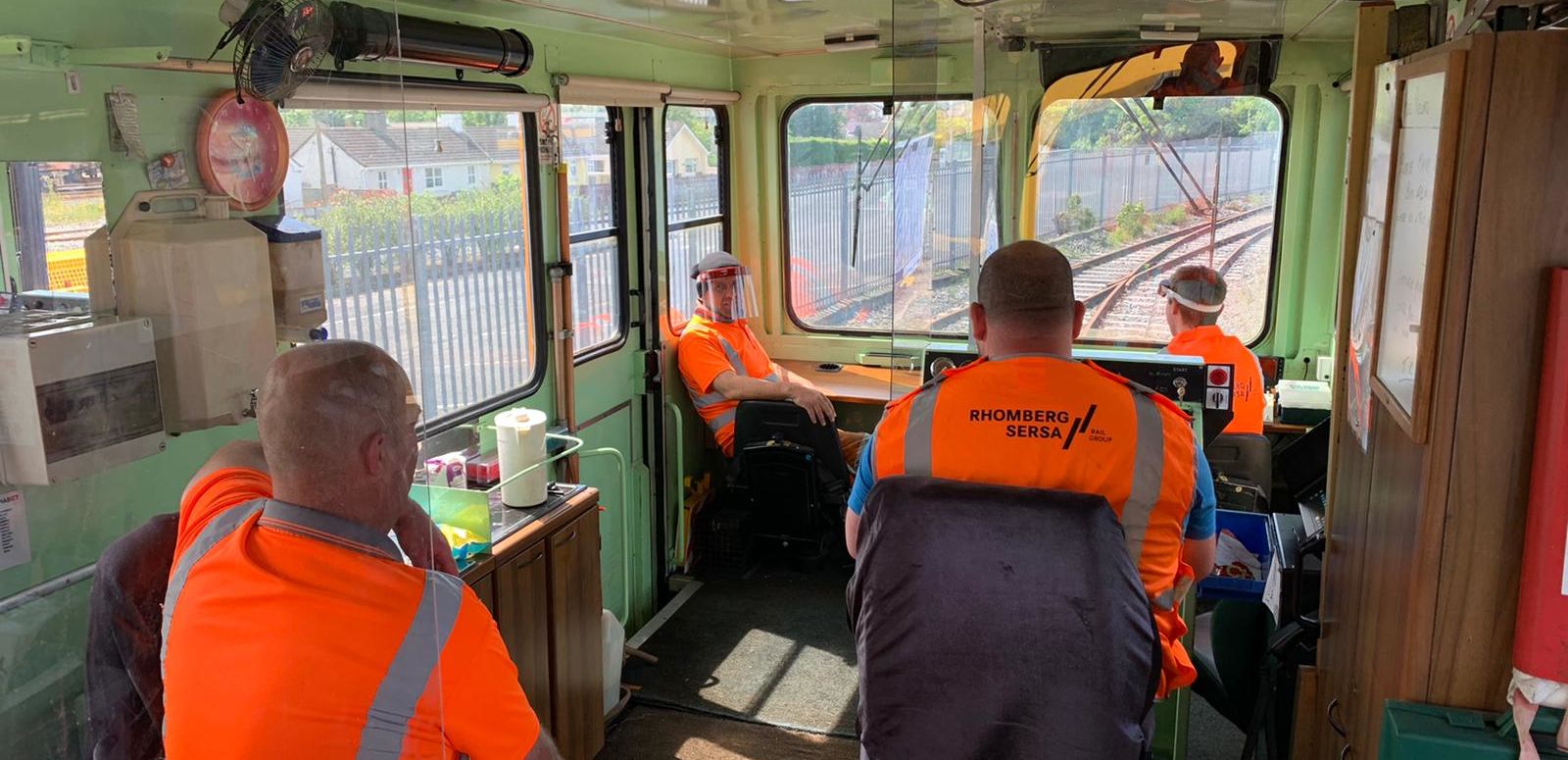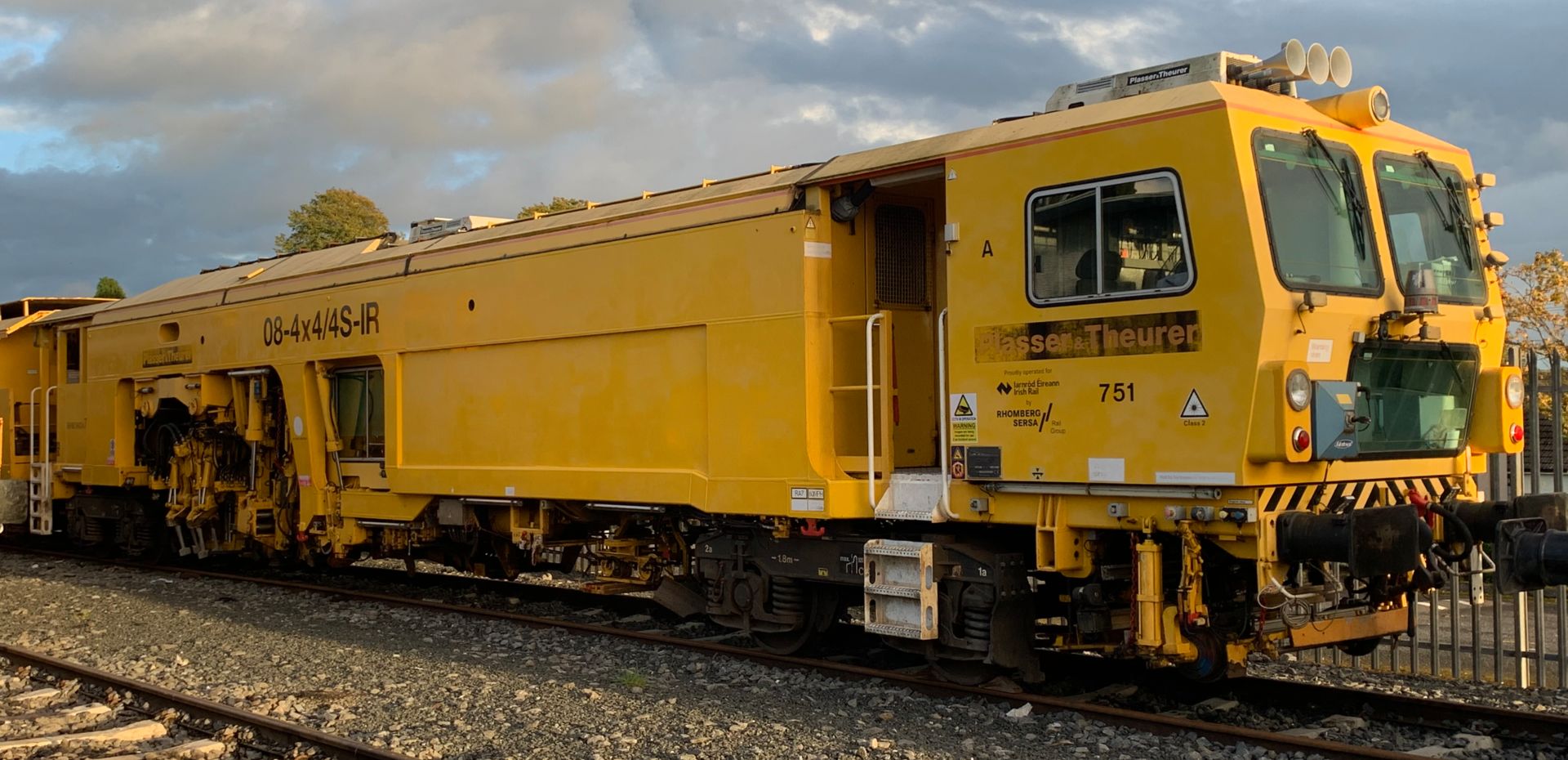The route to becoming a rail driver is heavily regulated but it is transparent and at its most basic, fairly straightforward.
In short, drivers must be calm in difficult situations, be able to make decisions, have a high degree of safety awareness and be well organised and reliable. They must also be medically fit to drive a machine.
The process to screen applicants is designed to determine whether applicants are psychologically and physically suited to the job and whether they can meet all the regulatory requirements. Failing any one of these regulatory requirements (for example, the medical exam which is carried out by an independent medical professional) means you cannot legally drive on the network.
Rhomberg Sersa recently began recruiting Driver Operators (DOs) for the On Track Machines (OTMs). OTM is a broad term to describe a number of different machines which operate on the rail network to repair and improve the lines. These machines include tampers and ballast cleaners.
The following article details the recruitment process and the reasons behind each step when we are recruiting for Driver Operators. The screening steps are a legal requirement.
Overview
The rail industry across Europe is governed by the European Rail Agency (ERA) which comes under the European Commission.
Under an EU Directive it has laid out the European Train Driver Licensing common minimum requirements which must be met to qualify to drive a train anywhere in the EU.
This means that in Ireland the Commission for Railway Regulation (CRR) is the authority for the actual Licencing of Train Drivers, and for the Recognition of Training Centres and Examination Centres in the State.
The Driver Training School is operated by Iarnród Éireann (IÉ) and all trainee drivers, whether working for IÉ or another company such as Rhomberg Sersa, must attend that school. A member of the public cannot apply to attend the school as places are only assigned to companies, such as Rhomberg Sersa, which are permitted to operate on the railways. Those companies then assign staff to attend the school.
Once the train driver has undergone their training and passed the necessary general professional competence, medical and occupational psychological fitness examinations, the train driving licence is issued by the CRR to the train driver.
Educational Requirements
Train and OTM drivers are required to have a minimum of 9 years of education and must provide evidence of this. Nine years of education means studying up to Junior Cert level.
Applicants are also required to hold a full clean road vehicle driving license.
Applicants are not required to have any previous experience on the railways.
Applying Online
Rhomberg Sersa operates an online application system. This system outlines the job specification and requirements as well as additional details such as salary, benefits and location.
When the closing date has been reached, applications are reviewed and the most suitable applicants are shortlisted.
-
1. Submission of CV.
-
2. Psychometric Sift (Online)
-
3. Interview and Personality Profile Test. (Face to face)
-
4. Psychometric test and interview (Face to face)
-
5. Medical (Face to face)
-
Details
-
1. After submission of their CV, those who are shortlisted based on their written submitted application are invited to go through the following stages.
-
2. The online Psychometric Sift is undertaken by the candidates at home. It is broken down into several segments which can be sat at a time suitable for the candidate. Successful completion of the Sift will lead to the next stage.
-
3. Next is a face-to-face interview with our team on site in Kildare followed by the Personality Profile Test on the same day. Successful completion of the interview and Personality Profile Test will lead to the next stage.
-
4. Successful candidates are then put forward for the Psychometric testing. This consists of three separate tests and interview with an external company. The test and interview can take up to three hours. Successful completion of the Psychometric Test and interview will lead to the next stage
-
5. A Driver Medical will then be scheduled in Clonsilla, Dublin. This is the only approved location for the railway driver medical
Upon successful completion of the above steps, a letter of offer is issued to the successful candidate(s).
Although the list may seem a little long, from the closing date for applications this process takes just three weeks from start to finish.
Interviews take place in person with COVID safety measures adhered to.
The various stages take place in this order because this is the order of probability in which candidates are likely to pass or fail. Therefore, if candidates do not pass the required online psychometric sift, they do not have to devote any time to attending an interview.
-
What is a Psychometric Sift?
A psychometric sift is a "sifting test” at the start of the recruitment process rather than at the end.
The test is an initial indicator of who is likely to meet the requirements to drive a train.
Interview
This interview takes place face-to-face (with strict adherence to COVID guidelines). This interview covers past experience and competencies and gives the candidate the opportunity to ask questions about the company and role.
What is the Psychometric Test?
This consists of various tests to assess cognitive abilities, stress tolerance and ability to react, attention and concentration, determinants of personality, and sensomotor and functions and perception.
Why do candidates have to undergo a medical?
As outlined above, train driving is a heavily regulated industry. One of the reasons for this is because of the potential risk of serious injury or death if safety rules are not strictly adhered to. Therefore, staff on the line must be medically fit to adhere to these rules.
For example, drivers must be able to see and recognise the traffic signals. For this reason, anyone who is colour blind would fail the driver medical. Similarly, anyone with a serious sight or hearing impairment would be unlikely to pass the medical.
FAQs
Can I study for the psychometric test?
Like aptitude tests, it is difficult to study for the psychometric test but using practice tests which are available online will help you become more familiar and at ease with the process.
What is involved in the medical exam?
It is a non-invasive medical which involves standard checks including your heart rate, weight hearing and eyesight. A urine test to test for drugs is also carried out.
What is involved in the Driver Training?
Train driving consists of four main components: Knowledge of Rule and Regulations; Knowledge of Traction; Train Handling; Route Knowledge. These topics are covered in the Driving School over the course of 8 weeks.
The training consists of a mix of classroom-based study and on-the-job training on the rail network with the candidates out on the machines for route and signals familiarisation every three weeks.
On completion of the course at the Driving School, the candidates go out on the network with Trainer Drivers. There are several OTM machine types and the drivers must be familiar with each machine type and have a ticket (training) for each.
When training is completed, the Driver Operators (DOs) will be working on the machine with another team member.
Where does the driver training take place?
The Driver Training School is in Inchicore in Dublin and the Rhomberg Sersa Depot is in Kildare. When training is completed, shifts can take place anywhere on the rail network.
Is further training required and provided?
Yes and yes. There is ongoing training which is provided by Rhomberg Sersa. There is also a requirement to keep knowledge, such as Route Knowledge, up to date. Full support is given to staff to ensure they meet all training requirements and continue to learn.













